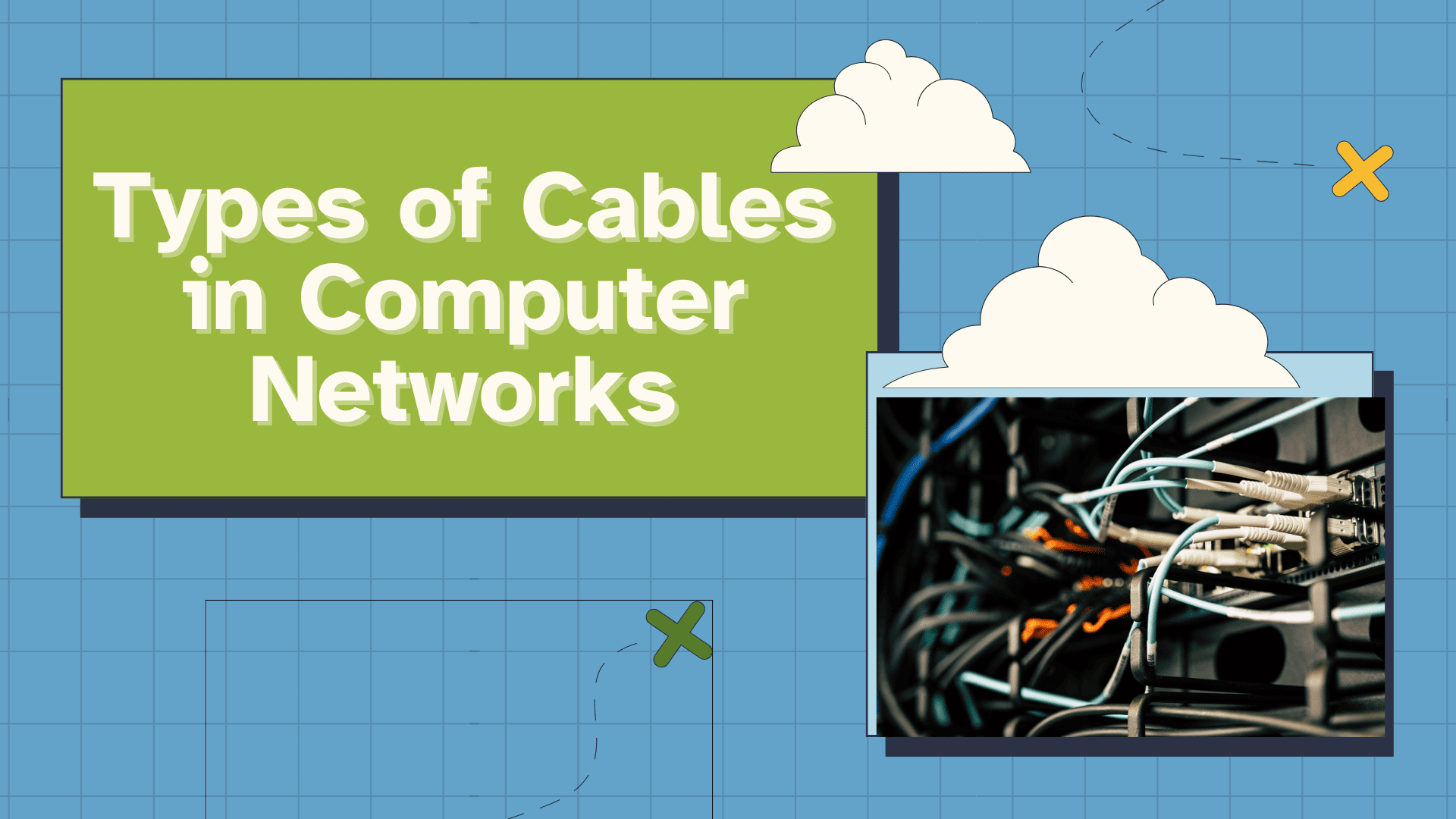
There are three types of cables in computer networks: twisted pair cables, such as Cat5e and Cat6, widely used in Ethernet networks. Coaxial cables are often used for broadband internet and television connections. Fiber optic cables, known for high-speed and long-distance data transmission, are ideal for modern networks. Each cable type differs in speed, bandwidth, and application.
In this article, we have explained the three cable types in networking to understand the functions and uses of each type of cable. We have also shown the diagrams for these cables to explain how they transmit information in computer networks.
For a deeper understanding of networking hardware, including cables, routers, and switches, consider exploring our online networking courses.
Understanding Network Cables
A Network cable is a physical medium that transmits data between devices such as computers, routers, switches, and servers. They are generally made up of conducting metals or glass.
A cable carries digital information in the form of electricity (in metal-based cables) or light (in glass-based cables). They are essential for connecting computer devices in both local and wide area networks.

3 Types of Cables in Computer Networks
There are three types of cables in computer networks are coaxial cable, twisted pair cable, and Fiber optic cables.
1. Coaxial Cable
A coaxial cable is a networking cable used for transmitting data, video, and voice signals. It transmits data in the form of electrical signals.
Coaxial cable is built with four main components:
1. Inner Conductor: A central wire, typically made of copper, which carries the electrical signal.
2. Dielectric Insulator: Surrounds the inner conductor, ensuring signal integrity and preventing interference.
3. Outer Conductor (Shield): Made of braided copper or metal foil, it protects the signal from external electromagnetic interference (EMI).
4. Outer Jacket: Provides physical protection and insulation for the cable.

Coaxial cables are mostly used in applications that require high-frequency signal transmission, like cable television, broadband internet, and radio.
The first coaxial cable was patented by Oliver Heavisine in 1880. They come in two primary impedance types: 50 Ohm for moderate power environments and 75 Ohm for residential installations and antenna connections.
2. Twisted Pair Cable
A twisted pair cable is a type of network cable made of pairs of insulated copper wires twisted together. The twisting helps reduce electromagnetic interference from external sources and crosstalk between adjacent pairs.
These cables are widely used in Ethernet networks and come in various categories (e.g., Cat5e, Cat6) that determine their speed and performance.
The structure of a twisted pair cable typically includes two main components:
1. Insulated Copper Wires: These are twisted together to minimize interference.
2. Shielding (Optional): Some cables include additional shielding to protect against electromagnetic interference.
Here is an image of twisted pair cable:
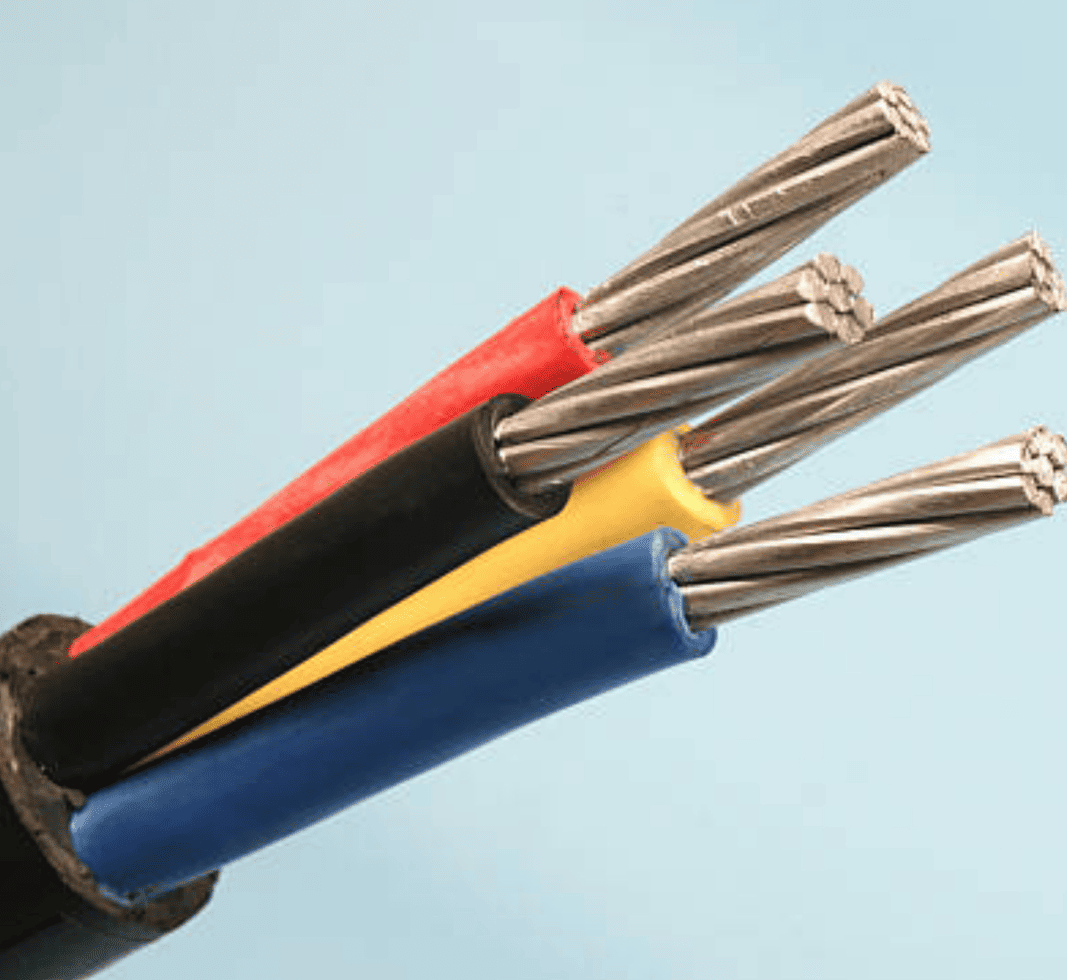
Twisted pair cables were invented by Alexander Graham Bell in 1881 and are mostly used in telephones, local area networks (LANs), and Ethernet connections.
There are two types of twisted pair cables:
● Unshielded Twisted Pair (UTP): UTP cables consist of multiple twisted pairs of copper wires, typically up to four pairs, each enclosed in a protective plastic jacket. The twisting helps reduce electromagnetic interference (EMI) and crosstalk between pairs
● Shielded Twisted Pair (STP): STP cables include an additional layer of shielding, such as aluminum foil or copper braid, which provides better protection against electromagnetic interference, making them suitable for high-speed networks and environments with significant EMI.
3. Fiber Optic Cables
A fiber optic cable is the fastest data transmission cable as it uses light signals instead of electrical signals to transfer data. Fiber optic cables were first developed in the 1970s. They transmit data as light signals through thin glass or plastic fibers, offering high-speed data transmission over long distances with minimal signal degradation.
The structure of a fiber optic cable typically includes three main components:
1. Core: The central part of the fiber where light travels, made from glass or plastic.
2. Cladding: Surrounds the core, reflecting light into the core to maintain signal integrity.
3. Outer Jacket: Provides physical protection to the fiber.
Fiber optic cables are mostly used in high-speed internet connections, telecommunications, and data centers due to their ability to support high bandwidths and long-distance transmissions.
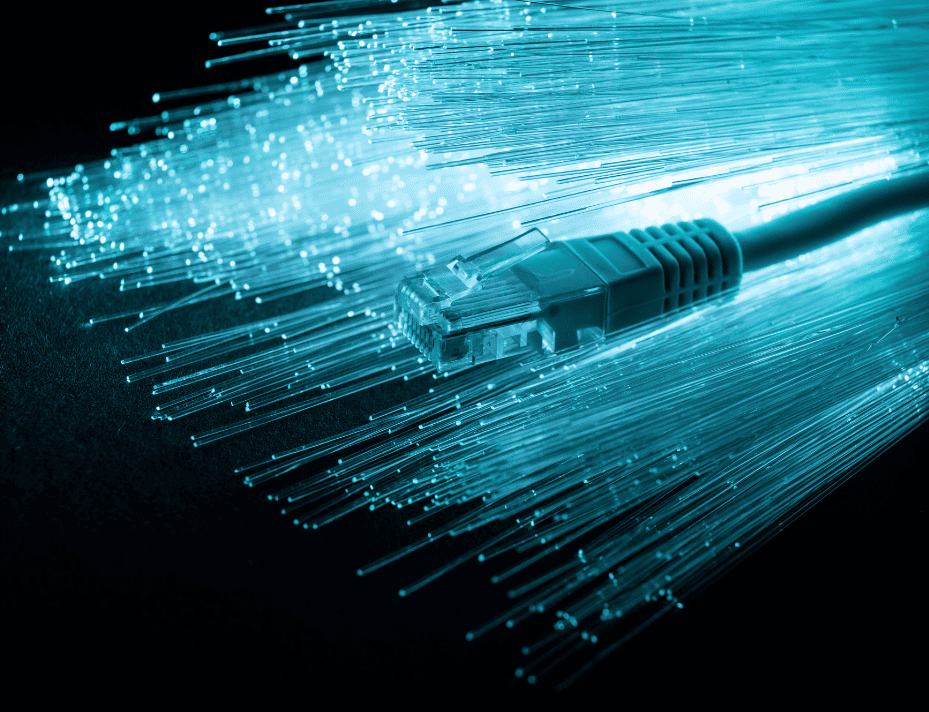
There are two main types of fiber optic cables:
1. Single-mode Fiber
Single-mode fiber uses a smaller core size (typically 9/125 microns) and a laser as the light source. It provides a single transmission path for light signals. A laser-based transmitter sends light at a single angle, hence the name single-mode.
Single-mode fiber cables are typically color-coded yellow. They are designed for long-distance communication, offering high bandwidth and low signal attenuation over extended distances.
Single-mode fiber is used for backbone networks and data centers requiring high-speed, long-distance connectivity. Here is the picture of a single-mode fiber wherein one end is LC, and the other end is SC.
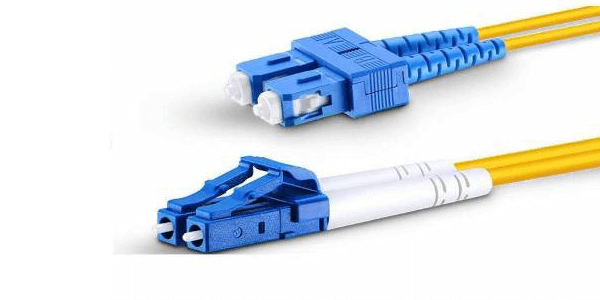
2. Multimode Fiber
Multimode fiber has a larger core size (commonly 50/125 or 62.5/125 microns) and uses either LED or laser light sources. It allows multiple light paths to propagate simultaneously. Cladding reflects the light into the core as it travels through the core.
Multimode fiber cables are typically color-coded orange. They are suitable for short to medium distances and provide lower-cost solutions compared to single-mode fiber.
Multimode fiber is commonly used in LAN environments, data centers, and campus networks where high-speed connectivity within a limited distance is required. Here is the picture of a multi-mode fiber wherein one end is LC, and the other end is SC.
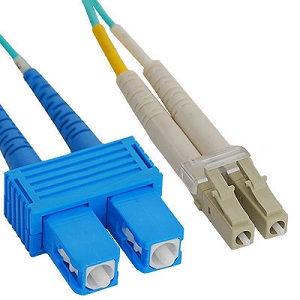
Enroll in an advanced CCNP training course and become a specialized Network Engineer. Contact learner advisors to know more!
Categories of Twisted Pair Cables
Twisted pair cables are categorized based on their function and speed. There are Cat 1, Cat 2, Cat 3, Cat 5e, Cat 6, etc cables.
| Category | Bandwidth | Data Rate | Description & Use |
|---|---|---|---|
| Cat1 | 750 kHz | Voice only | Used for old telephone lines. No internet support. |
| Cat2 | 1 MHz | Up to 4 Mbps | Early networks. Very slow by today’s standards. |
| Cat3 | 16 MHz | Up to 10 Mbps | Used in the 90s for basic networking. |
| Cat4 | 20 MHz | Up to 16 Mbps | Slightly faster than Cat3, but also outdated. |
| Cat5 | 100 MHz | Up to 100 Mbps | Good for basic internet use. Now mostly outdated. |
| Cat5e | 100 MHz | Up to 1 Gbps | Improved version of Cat5. Common in homes. |
| Cat6 | 250 MHz | Up to 10 Gbps | Great for gaming, streaming, and fast internet. |
| Cat6a | 500 MHz | Up to 10 Gbps | Better shielding and performance over longer distances. |
| Cat7 | 600 MHz | Up to 40 Gbps | Used in offices. High speed and well shielded. |
| Cat8 | 2000 MHz | Up to 25/40 Gbps | Super fast. Used in data centers and servers. |
Benefits of Different Network Cables
Coaxial Cable: Durable and cost-effective, ideal for stable signal transmission in TV, CCTV, and older broadband setups over moderate distances.
Fiber Optic Cable: Offers ultra-high speed, long-distance connectivity, and immunity to interference, making it perfect for modern networks and data centers.
Twisted Pair Cable: Affordable, easy to install, and supports up to 10 Gbps for short-range Ethernet connections in homes and offices.
Limitations of Different Network Cables
Coaxial Cable: Limited bandwidth and bulky design make it unsuitable for modern high-speed networks; mainly used for TV and legacy systems.
Fiber Optic Cable: Expensive, fragile, and requires specialized installation tools and expertise, increasing overall deployment complexity.
Twisted Pair Cable: Effective only up to 100 meters, prone to interference, and offers lower bandwidth compared to fiber for backbone connections.
Choosing the Right Network Cable
● Coaxial: Great for TV and older broadband systems.
● Fiber Optic: Best for high-speed, long-distance, and interference-free connectivity.
● Twisted Pair: Ideal for cost-effective, short-range networking.
Conclusion
In conclusion, network cables play a crucial role in modern communication systems, providing the infrastructure for data transmission across various environments. The primary types of network cables include coaxial, twisted pair, and fiber optic cables, each with distinct applications and advantages.
Twisted pair cables, categorized into different specifications like Cat5e, Cat6, Cat6a, Cat7, and Cat8, offer varying levels of bandwidth and speed, making them suitable for different networking needs.
Coaxial cables are commonly used in broadband and television connections, while fiber optic cables excel in high-speed, long-distance data transmission.
He is a senior solution network architect and currently working with one of the largest financial company. He has an impressive academic and training background. He has completed his B.Tech and MBA, which makes him both technically and managerial proficient. He has also completed more than 450 online and offline training courses, both in India and ...
More... | Author`s Bog | Book a MeetingFAQ
Comments (0)
Popular posts


What are the Different Types of Network ...
10 Dec 2025
CCNA Exam Fees and Expenses Breakdown
25 Aug 2025
New Cisco CCNA Syllabus for 2025
3 Dec 2025
What is a Cloud Service Provider and Top ...
8 Dec 2025Recent posts

What is Green Computing and Why is It ...
17 Dec 2025
What is Default Gateway and What Does it ...
16 Dec 2025
What is a Hub in Computer Networks and ...
15 Dec 2025
What is Tree Topology in Networking?
15 Dec 2025
What is the Difference Between IPv4 and ...
15 Dec 2025Upcoming batches
Contact learning advisor











